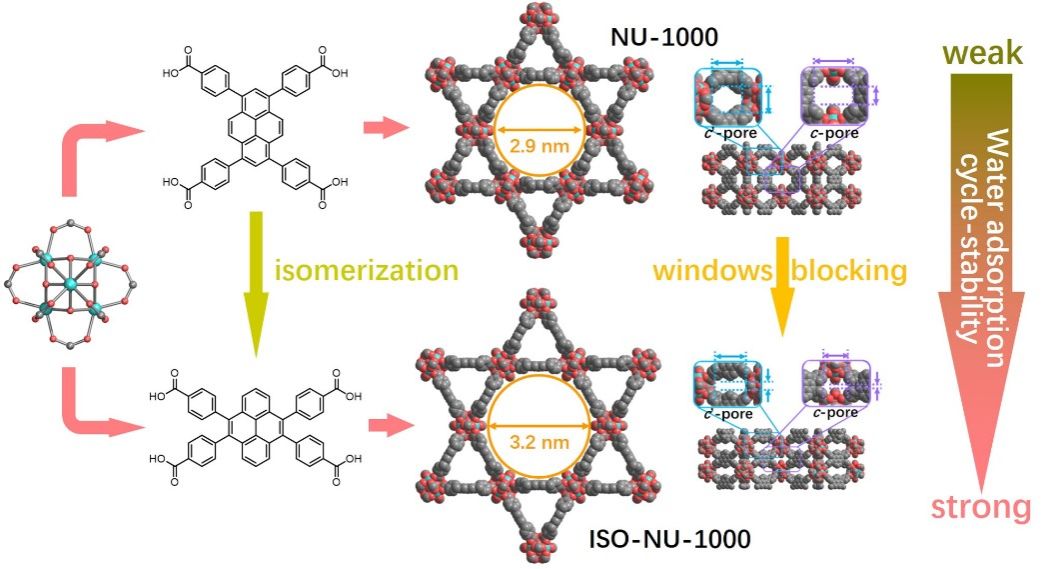Isomer of NU-1000 with a Blocking c-pore Exhibits High Water–Vapor Uptake Capacity and Greatly Enhanced Cycle Stability
Zhiyong Lu,*a,d Jiaxin Duan,b Hao Tan,dLiting Du,c Xiang Zhao,d Rui Wang,b Satoshi Kato,b Shilong Yang,c Joseph T. Hupp*b
a College of Chemistry and Molecular Engineering, Nanjing Tech University, Nanjing 210009, China
b Department of Chemistry, Northwestern University, 2145 Sheridan Road, Evanston, Illinois 60208, USA
c Advanced Analysis and Testing Center, Nanjing Forestry University, Nanjing 210037, China
d College of Mechanics and Materials, Hohai University, Nanjing 210098, China
ABSTRACT: Chemically and hydrolytically stable MOFs have shown great potential for many water-adsorption-related applications. However, MOFs with large pores that show high water-uptake capacity and high hydrolytic and mechanical cycle stability are rare. Through a deliberate adjustment of the linker of a typical Zr-MOF (NU-1000), a new isomer of NU-1000 with blocked c-pores, but large mesopores was successfully synthesized. This new isomer, ISO-NU-1000, exhibits excellent water stability, one of the highest water vapor uptake capacities, and excellent cycle stability, making it a promising candidate for water-vapor-sorption-based applications such as water-adsorption-driven heat transfer. We find that the high water-cycling stability of ISO-NU-1000 is traceable to its blocking c-pore that hinders the hydrolysis of node-coordinating formate in the c-pore area and thereby prevents the introduction of node aqua and terminal hydroxo ligands. Absent these ligands and their ability to hydrogen-bond to channel-located water molecules, the strength of guest (water)/host (MOF) interactions is diminished and the absolute magnitude of the capillary force exerted by water during its evacuation from MOF channels is attenuated. The attenuation leaves the MOF capable of resisting pore collapse, capacity loss, and crystallinity loss during repetitive evaporative removal (and re-introduction) of water from pores.

J. Am. Chem. Soc. 2023, 145, 4150–4157(影响因子: 16.383)
论文链接:https://doi.org/10.1021/jacs.2c12362
